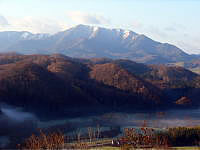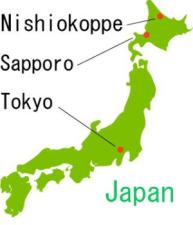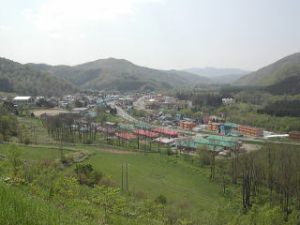About Us

We are a juridical non-profitable organization, managing sika deer as local natural resource in Nishiokoppe Special Hunting Area in Nishiokoppe Village, Hokkaido, Japan. We aim to reduce deer-caused agricultural and forestry damages by hunting management of deer, to enhance hunter education, and to contribute to the local economy by sustainable use of deer. We also use the non-consumptive values of wildlife by educational program about local wildlife and nature.
Background
Hokkaido sika deer (Cervus nippon yesoensis) have increased explosively in last two decades without important predators. Agricultural and forestry damages caused by them amount to several billion yens annually. Although Hokkaido government has tried to reduce deer population under the deer management plan since 1998, sika deer are still overabundant. Although the authorities depend on sport hunting and nuisance control kill by general hunters for capturing deer, reduction of the number of hunters and the aging are progressing. While sika deer potentially have consumptive and non-consumptive values as natural resource, e.g. game, meat, skin, and viewing, the values are not recognized sufficiently because hunting and consumption of game meat etc. are not so popular in Japan, traditionally. Local deer management in view of resource use and promoting hunting are necessary for human-deer coexistence.
Nishiokoppe Spetial hunting Area
A local sika deer management has started in Nishiokoppe Village, Hokkaido. A special hunting area (SHA) was established in the whole of the village (308 km2) in 2004, based on the law of wildlife and hunting. This is the only SHA in Hokkaido. Kinds of game animals, quota, number of hunters per day, etc can be regulated uniquely in a SHA, differing from general hunting areas. The management objectives of the Nishiokoppe SHA (NSHA) are 1) to control the local deer population for reduction of agricultural and forestry damages by deer, 2) to realize safe and easy hunting for hunters and the residents, 3) to contribute to local economy by consumption and accommodation of hunters and by employment of guides, 4) to conserve native hunting culture and to educate hunters. The activities are 1) monitoring deer population, 2) guided hunting, 3) hunting school for inexperienced hunters, and 4) general education about wildlife and hunting.
Nishiokoppe Village
Nishiokoppe Village, 44°12’-44°26’ N and 142°48’-143°04’ E, is located at eastern Hokkaido Island (Fig. 1) and occupies 308 km2. The population of the residents is approximately 1,200 and the key industries are dairy and forestry. The temperature annually averages 5℃ and ranges from -20 to 30℃. The maximum snow depth is less than 100 cm. The annual precipitation is approximately 1050 mm. The elevation ranges from 60-1142 m. Forests occupy 89% of the whole village. The major vegetation is mixed forest with evergreen conifers and deciduous broad-leaved trees. The dominant tree species are Acer mono, Tilia japonica, Quercus crispula, and Abies sachalinensis, with undergrowths of Sasa spp. Plantation forests composed of Abies sachalinensis and P. glehnii are scattered. Agricultural lands occupy 5% of the whole village and mainly include pastures.
Organization
Nishiokoppe Wildlife Association (NWA) manages NSHA and is a juridical non-profitable organization. NWA consists of local hunters, members of a deer farming group, a village hotel, and others. Nishiokoppe Wildlife Steering Committee supervises NWA and consists of the village office, a local forestry association, a local farmers association, a local chamber of commerce and industry, a local hunting club, a local police, a local Hokkaido forestry office, a natural environmental clerk of sub prefecture office, and so on. Thus, local agreements are taken into consideration.
Monitoring
Harvest data and spotlight survey data in the village by Hokkaido Government (HG) are available for more than 10 years. HG collected harvest data by questionnaire survey. NWA collected all harvest data directly since 2004/05. Spotlight surveys were conducted in a day in October for 20 km by HG and intensively in each 3 days in April and October by NWA. We survay deer infectious disease e.g. hepatitis E with Hokkaido University.



